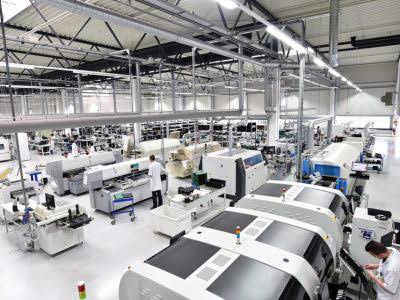- Bookkeeping
-
by pohoda

Direct materials are all the materials you bought and used to make your final product. This includes raw materials, components and any parts directly used in production. Total manufacturing costs showcase how much your company spent to produce its inventory in a given period of time.
Discover the Power of Inventory Source: An Introduction Video
- Gaining accurate insight into these cost articles can be easier said than done, however.
- Maintaining detailed records of overhead expenses is essential for accurate allocation.
- Businesses can reduce Total production costs while maintaining quality by optimizing processes, embracing lean manufacturing principles, and seeking cost-effective materials.
- Direct materials only constitute items that are used in significant, measurable quantities in manufacturing, i.e. the materials included in the bill of materials of a product.
- First, identify the cost of direct materials, which includes all raw materials used in production.
They might not be directly traceable to the finished product and wouldn’t typically appear on a bill of materials. Examples could include glue, water, cleaning products, or any other materials used at some point during production. To calculate the total manufacturing cost per unit, we need to determine the manufacturing overhead cost per unit.

What are manufacturing costs?
- As such, calculating TMC precisely is invaluable for anyone looking to gain more insight into their manufacturing cost accounting fundamentals.
- Workers like janitorial staff and supervisors all play an essential role in the success of your business, but they are considered “indirect labor” for the sake of these calculations.
- Direct labor cost refers to the salary or wages a business pays its workers during the manufacturing process.
- By analysing the amount of excess that is usually generated during production, you can use this to adopt a more sparing approach to purchasing.
- By embracing the insights gained from our exploration and implementing effective cost-management strategies, you can position your manufacturing business for long-term success.
Imagine a toy manufacturer calculating the total direct manufacturing cost for a specific toy, including the cost of plastic, paint, and the wages of the workers assembling it. Overheads directly impact a business‘ balance sheet and income statement so it’s important to track and allocate these expenses. Allocating overhead helps you to identify areas to improve efficiency total manufacturing cost formula and reduce costs. It is important for pricing decisions because by incorporating indirect costs into pricing, you can cover costs by effectively pricing inventory stock to improve profitability. Total cost of production includes the total manufacturing cost plus all additional indirect material and labor costs. The three main manufacturing costs are materials, labor, and overhead expenses.
- The process itself introduces a myriad of variables, ranging from input and output to direct and indirect costs.
- It lets you gain insights into cost-saving opportunities and make strategic decisions to streamline your operations.
- One of the main challenges in allocating overhead costs lies in their indirect nature.
- The key difference between direct costs and indirect costs is that direct costs can be tracked to specific item, and tend to be variable.
- Whether you’re a seasoned industrialist or a budding entrepreneur venturing into production, grasping the nuances of manufacturing costs can spell the difference between success and struggle.
- It involves considering several factors to determine the suitable basis for allocating these expenses.
- Direct labor is the labor done by employees responsible for the hands-on work that goes into manufacturing the products.
What factors are related to manufacturing costs?

George calculates the TMC by adding the cost of direct materials, the cost of direct labor and the overhead costs. Conversely, indirect materials are generally used in many types of products in insignificant quantities per unit. These are not included in direct materials and fall into the manufacturing overhead. For example, for a furniture manufacturer, timber, paddings, and textile are the direct materials used in production, while glue or sandpaper are indirect materials. These terms encompass the costs incurred in producing goods, including direct materials, direct labor, and manufacturing overhead. By using these terms interchangeably, it is acknowledged that they all refer to the overall expenditures involved in manufacturing a product.

How to calculate direct labour costs
We put together 7 of the most commonly used formulas for inventory management in this handy document for anyone to download. For instance, in the example above, after the production cycle, our imaginary business has 5 assembly kits left over. This isn’t a big deal– they’ll be used in the next production cycle– but until then, you’ll have $1000 worth of inventory just sitting around collecting dust. If you like this formula or formulas in general you’re going to love our Inventory Formula Cheat Sheet! We are aware of few businesses, that tracks a small thread and amount of adhesive that are used in the assembly of Machines components. For few business its good, but for larger machine assemblies this may not be needed.
- ProjectManager is award-winning project management software that helps manufacturers plan, manage and track their manufacturing costs in real time.
- Or you may research some other potential partners, who can provide you with a better price (whilst supplying you with equally good materials).
- Manufacturing overhead is considered an indirect cost, as it’s not directly related to the product.
- Next, the “purchased direct materials” are the materials that still need to be bought for manufacturing the product.
- Three primary components, direct materials, direct labor, and manufacturing overhead, comprise the total manufacturing product costs.

The total manufacturing cost (TMC) shows the total production cost during a specific period, including all direct QuickBooks and indirect expenses. This metric does not consider whether the goods were completed by the end of the period or not, as it reflects the cumulative cost of production. When companies regularly track the total manufacturing cost, they get a better idea of areas to save expenses and eliminate wasteful spending. For example, if the figure is higher than expected, there may be inefficiencies in the production process. These may include excessive waste, high labor costs, or outdated machinery, among others. It’s important to factor in both your direct and indirect costs when using the total manufacturing cost formula.
